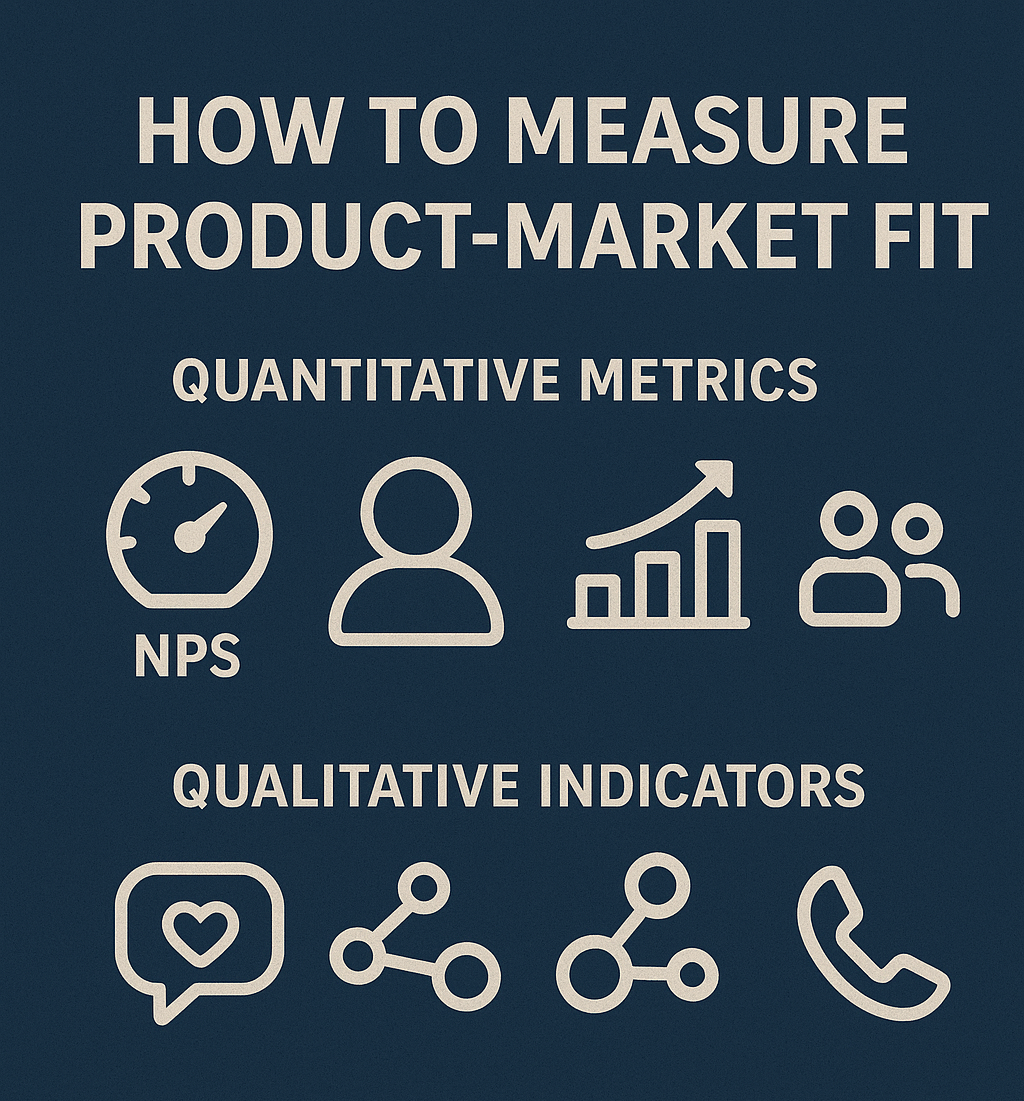How to Define Product-Market Fit: A Practical Guide
Learn how to define and measure product-market fit with actionable frameworks and metrics. Discover why PMF is crucial for sustainable business growth.
What is Product-Market Fit?
Product-market fit describes a scenario where a company's target customers are buying, using, and telling others about the company's product in numbers large enough to sustain that product's growth and profitability. As Steve Blank defines it, this occurs when a company has successfully identified a target audience, understood their needs, and built a solution that addresses them effectively.
At its core, product-market fit refers to how well a product meets the needs of a specific market. The product should solve at least one significant problem for customers, creating value that resonates deeply enough to drive organic growth and retention.
Why Product-Market Fit Matters
Achieving product-market fit is often what distinguishes market leaders from struggling startups. Alex Schultz, Facebook's VP of Growth, notes that the biggest problem he sees facing companies is that they don't have product-market fit when they think they do. This disconnect explains why many venture capitalists demand evidence of product-market fit before investing.
When you achieve true PMF, you'll notice several key indicators:
- Customers actively refer your product to others
- Retention rates remain consistently high
- Growth becomes more organic and sustainable
- Customer acquisition costs decrease over time
How to Measure Product-Market Fit
No single set of metrics can tell any business when it achieves product-market fit, as the best way to measure PMF differs for each company. However, several reliable indicators can help you assess your progress:

Quantitative Metrics
- Net Promoter Score (NPS): Track how likely customers are to recommend your product
- Retention rates: Monitor how many customers continue using your product over time
- Usage frequency: Measure how often customers engage with your core features
- Customer lifetime value: Calculate the long-term value of your customer relationships
Qualitative Indicators
- Customer testimonials: Collect unsolicited positive feedback
- Referral patterns: Observe organic word-of-mouth growth
- Customer frustration: Note what happens when features are removed or changed
- Support requests: Track the nature and volume of customer inquiries
The Lean Product Process Framework
To systematically work toward product-market fit, follow the Lean Product Process through multiple iterative waves:
- Determine your target customer: Identify who you're building for
- Identify underserved needs: Discover what problems they need solved
- Define your value proposition: Articulate how you'll solve these problems
- Specify your MVP feature set: Decide what to build first
- Create an MVP prototype: Build a testable version
- Test with customers: Gather feedback and validate assumptions
This process is iterative, meaning you continuously analyze customer feedback, make revisions, and loop back to earlier steps as needed to improve your product-market fit.
Common Pitfalls to Avoid
Many teams struggle with PMF because they fall into predictable traps:
- Building features without customer validation: Creating solutions before confirming problems
- Ignoring early warning signs: Dismissing negative feedback as outliers
- Targeting too broad a market: Trying to serve everyone instead of a specific segment
- Over-optimizing too early: Perfecting features before validating core value
Visualizing Your PMF Strategy with Mind Maps
Given the complexity of tracking customer segments, value propositions, and feedback loops, visual frameworks can dramatically improve your PMF discovery process. At ClipMind, we've found that creating mind maps helps teams visualize the relationships between customer needs, product features, and market opportunities.
Our AI Product Idea Brainstormer can help you structure your PMF exploration, while the Pros and Cons Analyzer assists in evaluating different market approaches.
When You've Achieved Product-Market Fit
You'll know you've reached product-market fit when you experience what Marc Andreessen famously described as "when customers are buying the product as fast as you can make it, usage is growing as fast as you can add more servers, and money from customers is piling up in your company's checking account."
While this may sound dramatic, the underlying truth remains: product-market fit transforms your business from pushing products to customers who are pulling your solution from you. It's the foundation upon which sustainable growth is built, and worth every iteration required to achieve it.
 ClipMind
ClipMind